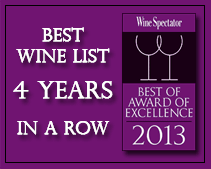German Riesling’s Turn in the Spotlight
La Paulée de New York, Daniel Johnnes’s adaptation of the Meursault harvest festival, begins this week, signifying the apogee of a remarkable month of wine in the city. La Paulée, a mélange of seminars, discussions and tastings culminating in a grand dinner in which producers and collectors share precious bottles, has been so successful that it has inspired similar events celebrating other wines.
Two weeks ago was BurdiGala, which employed Paulée-like tactics in an effort to draw attention to the beauty of Bordeaux and to win over younger wine drinkers who have largely forsaken it. Next month brings the wine writer Antonio Galloni’s Festa del Barolo, at which all manner of great Barolo will be consumed. Perhaps most intriguing of all was Rieslingfeier, a celebration of German riesling held in mid-February.
Burgundy and Bordeaux are historic benchmark wines. Barolo is rapidly achieving that status. But German riesling? In fact, in the 19th century, German riesling was considered one of the world’s great wines. Then wars, Prohibition and changing tastes turned riesling from a mainstay into something of a pariah, not withstanding the beauty and delicacy of the wines. Through the 1980s and ’90s, though riesling was the darling of wine writers and sommeliers, consumers were unmoved, until the first decade of the new century. Then, in the United States at least, riesling took off. No, it has not become the new chardonnay or pinot grigio, wines so popular that they became generic terms among mass-market drinkers. Instead, the rising popularity of riesling signals, to me, the increasing sophistication of Americans who have fallen in love with wine.
So it came to Stephen Bitterolf, by day wine director at Crush Wine and Spirits in New York, to organize the inaugural Rieslingfeier, which translates roughly as a celebration of riesling. It was a modest event by Paulée standards, with just six winemakers in attendance. But they included leading German lights like Klaus Peter Keller of Weingut Keller in Rheinhessen, Katharina Prüm of J.J. Prüm in the Mosel, and Andreas Adam of A.J. Adam, also in the Mosel. The wine writer David Schildknecht led a seminar on the diversity of riesling expression, and events peaked with a collector’s dinner that drew approximately 100 people to Rouge Tomate on a Saturday night.
While not exactly hidden away, riesling lovers with deep cellars are not always obvious. Riesling does not headline wine auctions in Hong Kong and London. Still, collectors attended from Europe, California, even Idaho. They were a modest lot, compared with Bordeaux and Burgundy collectors, fueled not so much by a competitive instinct as a desire to share and enjoy.
Revelers bearing bottles squeezed between the long, narrow tables in the downstairs dining room, looking for familiar faces and glasses to fill. In addition to the wines provided by the producers, those at the dinner might have tasted a 1988 Prüm Bernkasteler Badstube spätlese, which showed a lovely, steely delicacy and intensity, or a gorgeous 2004 Keller G-Max, a wondrously precise, complex dry riesling that has a cultish following.
The wine writer John Gilman was pouring another gorgeous dry riesling, a ’90 Von Schubert Abtsberg spätlese trocken, while one infiltrator broke ranks with an Austrian riesling, a 1995 Nikolaihof Vinothek, a wholly unusual wine that spent 17 years undisturbed in large oak casks before it was bottled. It was lightly mineral, lightly floral, delicately nuanced and yet with an underlying power that unified the disparate elements.
As so often occurs at collector’s events like this, more great wine is opened than can possibly be consumed. While gratifying to taste so many wonderful wines, it is also tantalizing and bittersweet to realize that any one of them could be the centerpiece of a great dinner at which the wine could be savored in detail rather than in fleeting moments. Still, a spirit of generosity and a desire to share practically dictates that excess will rule.
Mr. Bitterolf said afterward that the event was successful beyond what he had hoped, and that he would be planning another Rieslingfeier for next year.
http://dinersjournal.blogs.nytimes.com/2013/03/06/german-rieslings-turn-in-the-spotlight/
You can skip to the end and leave a response. Pinging is currently not allowed.





